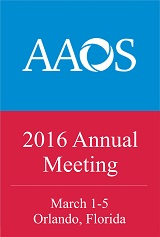
AAOS 2016: High-dose hyaluronate reduces pain versus placebo for plantar fasciitis

AAOS 2016: High-dose hyaluronate reduces pain versus placebo for plantar fasciitis
Hyauronate Injection for Plantar Fasciitis: A Randomized, Double-blind, Placebo Controlled Study
CONFERENCE ACE REPORTS
This ACE Report is a summary of a conference presentation or abstract. The information provided has limited the ability to provide an accurate assessment of the risk of bias or the overall quality. Please interpret the results with caution as trials may be in progress and select results may have been presented.
Synopsis
168 patients with plantar fasciitis were randomized to injection therapy with either low-dose hyaluronate, high-dose hyaluronate, or placebo. Each treatment arm received five weekly injections of the allocated treatment, and was assessed for pain, the Roles and Maudsley score and activities of daily living (ADL) score each week. After 5 weeks, the high-dose hyaluronate group demonstrated a signifi...
To view the full content, login to your account,
or start your 30-day FREE Trial today.
FREE TRIAL
LOGIN
Forgot Password?
Explore some of our unlocked ACE Reports below!

Learn about our AI Driven
High Impact Search Feature
Our AI driven High Impact metric calculates the impact an article will have by considering both the publishing journal and the content of the article itself. Built using the latest advances in natural language processing, OE High Impact predicts an article’s future number of citations better than impact factor alone.
Continue



 LOGIN
LOGIN

Join the Conversation
Please Login or Join to leave comments.